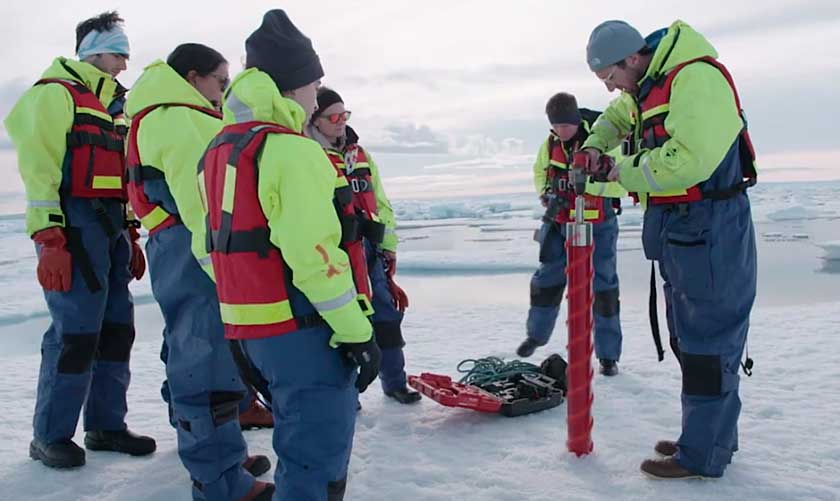
A research team, led by URI’s Graduate School of Oceanography, traveling as part of the National Science Foundation funded Northwest Passage Project (NPP) to investigate the Canadian Arctic Archipelago, discovered a variety of plastics in the sea ice cores collected from floes in the Passage. The team of natural and social scientists, supported by 25 post-secondary students from the U.S. and Canada, were collecting water, ice and air samples as part of the NPP to better understand the impact of climate change on the Arctic environment and biological diversity in the Passage. Over the next few months, the scientists will be analyzing the wealth of samples and data they collected at sea.
According to Brice Loose, URI associate professor of oceanography and the expedition’s chief scientist, the team found a disturbing amount of plastic – different types, sizes and colors – in ice cores collected along the ship’s route. Since 2014, it’s been known that plastic has been appearing in sea ice in the Central Arctic, Beaufort Gyre and the Eurasian Basin. However, this is the first time the presence of plastics has been discovered in ice – both multi-year and first-year ice – from the Northwest Passage.
Building on the research of colleagues who had been looking at the existence of plastics in the Central Artic, the NPP team collected plastic from ice floes that were up to about 8 feet in thickness. Some of the sea ice collected is believed to have started out in the Central Arctic, moving east through the Nares Strait by Greenland, and then making its way into the Passage’s Lancaster Sound last year.
The collected samples reinforce the observation that ice concentrates microplastics, which are found in a much greater abundance than in an equivalent volume of seawater. This may impact the structure of the ice and its absorption of solar radiation as well as the interaction of plastic particles with microorganisms, phytoplankton and zooplankton. While these potential relationships have not yet been established for sea ice covered regions, the sheer quantities of microplastics found does underscore how manmade waste is impacting the environment – even in more remote, sheltered locations such as the Arctic.

